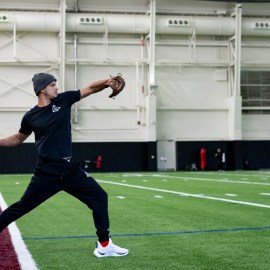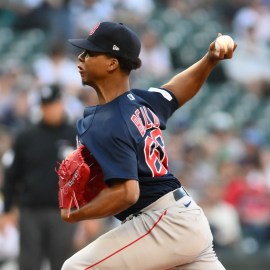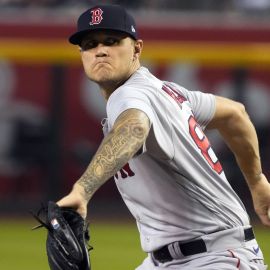The Boston Red Sox are entering the season without an external addition to the starting rotation, which seemed to be the biggest need of the offseason.
Lucas Giolito had been the lone addition before he suffered a season-ending elbow injury during spring training. Tuesday night seemingly signaled the end of any more additions for the Red Sox with starter Jordan Montgomery reportedly heading to the Arizona Diamondbacks after months of being tied to Boston.
There were depth additions in Cooper Criswell and Chase Anderson, though neither will be more than fill-in arms for the rotation at some point.
That sets up a rotation for Alex Cora consisting of five right-handers in Brayan Bello, Nick Pivetta, Kutter Crawford, Garrett Whitlock and Tanner Houck. All five return for Boston and all five must legitimately elevate their games in a big way to avoid a third-straight last-place finish in the American League East.
Story continues below advertisement
The actions of the offseason show that while the Red Sox wait for the next opportunity that the front office sees fit to spend big, internal improvement has to be the avenue. That's what the offseason actions tell about the Red Sox. That doesn't just come from who Boston signed or did not sign. It speaks volumes about the additions off the field, as well.
More red sox
Chief baseball officer Craig Breslow returned to the Red Sox after pitching in Boston himself, though now working in the front office. He came to build a "pitching development infrastructure." The additions of pitching coach Andrew Bailey, director of pitching Justin Willard and special advisor Kyle Boddy all joined Breslow to make that happen.
That mission spans from the mound at Fenway Park to every level of the Red Sox farm system, which needs to develop arms to find balance in a position-player-dominated system.
So far, the Red Sox have gotten down to business by seeking value, altering pitch repertoires, studying pitch shapes and tweaking mechanics to find answers to unlock greater potential from the arms already in the organization.
Story continues below advertisement
Is there reason to buy into Boston's trust in its current arms? It depends on how you value spring training.
Statistics from those exhibitions often aren't valued and may not even be representative of performances. Spring training is often suited to analyze approaches and individual skills. With that said, Boston's staff performed well in the grander scope of the league.
The Red Sox staff tallied the second-most innings (296 2/3) and second-lowest ERA (3.76) during spring training while ranking in the top five in WHIP (1.27) and opponent batting average (.231). Is that representative of what the season could be? Tough to tell given the ever-changing personnel of spring training games. Regardless, the Red Sox are finding some internal improvements with the new regime.
Story continues below advertisement
It'll be on the remaining arms to produce in 2024. With the final big name off the market, the Red Sox are ready to roll with internal candidates. Time will tell through the season what impact that decision will have.
Featured image via Kevin Sousa/USA TODAY Sports Images

















